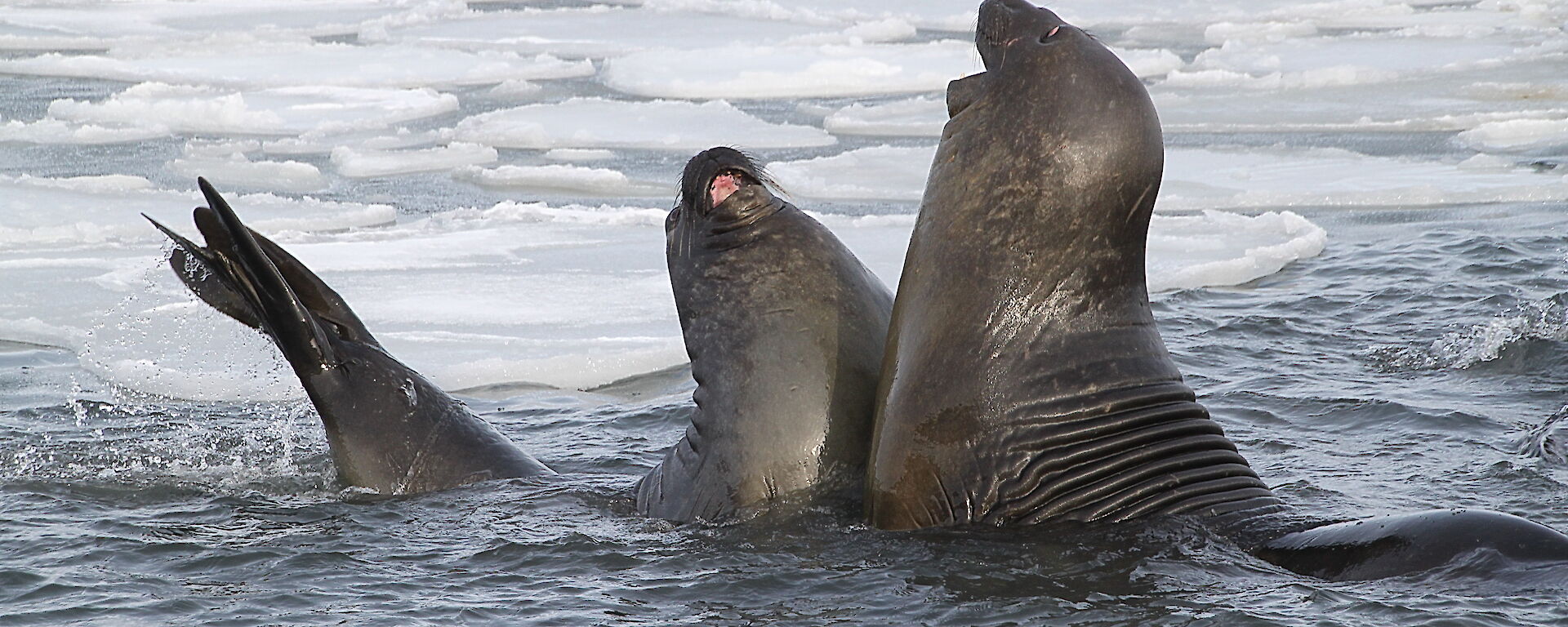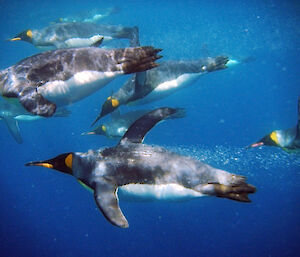A first-of-its-kind study has mapped the global movements of a range of marine animals around the world, including whales, sharks, sea birds and polar bears, to understand how they travel the ocean.
The analysis revealed that despite significant differences in body size, shape and mode of movement, marine animals move through the ocean in similar ways.
The study, published today in PNAS, was led by researchers from the University of Western Australia (UWA) and the Australian Institute of Marine Science (AIMS) and included scientists from the Australian Antarctic Program. It was the result of a worldwide collaborative effort from researchers involved in the Marine Megafauna Movement Analytical Program, a group of experts in marine megafauna movement and human mobility.
The researchers analysed satellite tracking data of more than 2500 tagged individuals from 50 marine species, looking at their speed and movement patterns.
Unlike terrestrial species, where movement is commonly associated with body size, the team was surprised to find that unrelated marine species displayed the same movement patterns. For example, one tonne whales display similar movement patterns to seabirds weighing a few hundred grams.
The differences found across all species were associated with where these species were moving, and are potentially associated with the way they use different marine habitats.
The study also revealed that movement in oceanic habitats was more directed (straight towards a key location), while in coastal environments movement was more complex, suggesting animals adapt their behaviour when closer to shore, potentially in search of food, or for protection.
Lead author Dr Ana Sequeira, from the UWA Oceans Institute said it was important to understand how animals adapt their movement patterns to different environments, particularly as rapid changes are taking place in the ocean, with potentially profound effects on the conservation of these species.
“Understanding drivers of animal movement is crucial to assist mitigating adverse impacts of anthropogenic activities on marine megafauna,” Dr Sequeira said.
“While the results of the study suggest marine species have adapted to different properties of the inshore and offshore marine environment, it is still important to understand how, and how fast, they can adapt.
“This is particularly important to guide conservation management in view of the forecasted severe ocean changes, including sea level rise and reduced Arctic sea ice cover.”
Australian Antarctic Division seabird ecologist, Dr Barbara Wienecke, who contributed to the study, said the findings illustrate the importance of moving away from single species studies, to gain a broader ecosystem perspective on research questions.
Dr Sequeira aims to expand this research to investigate global interactions between vessels and marine megafauna.



